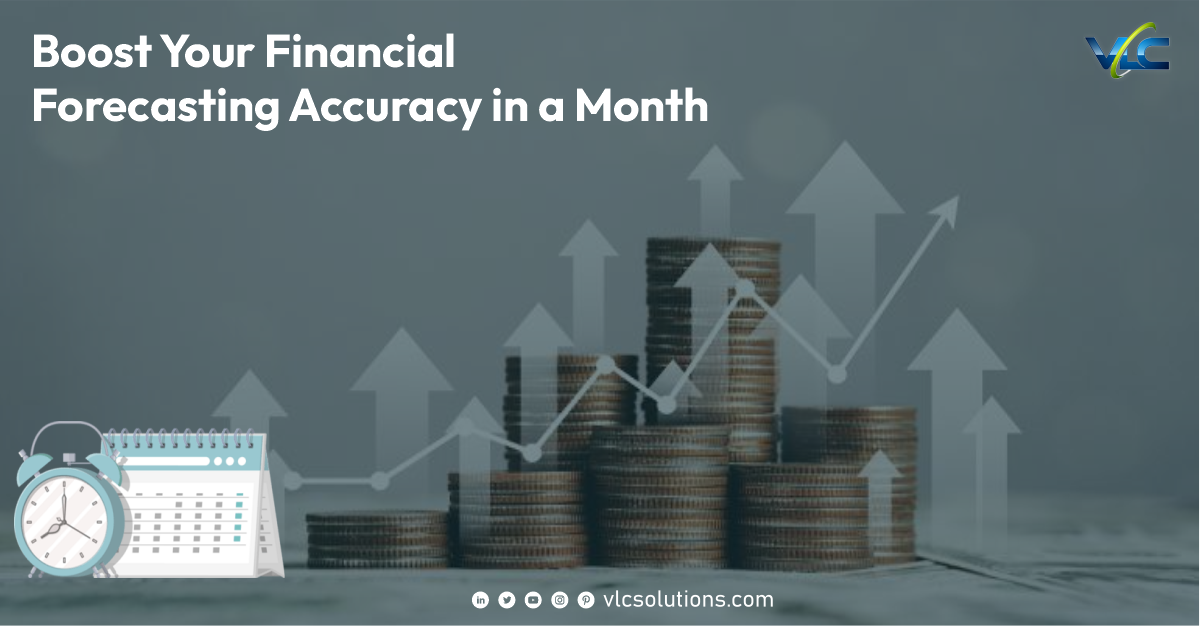Boost Your Financial Forecasting Accuracy in a Month
Financial forecasting as a significant tool in a business environment cannot be stressed enough, especially in today’s information age. Accurate financial forecasts can guide effective budgeting, identify trends, and help manage cash flow. However, achieving high levels of precision in forecasting can be a challenge. Even slight inaccuracies can lead to significant problems, from budget shortfalls to missed growth opportunities.
Fortunately, focusing on specific strategies can significantly improve your financial forecasting accuracy within 30 days. Explore actionable steps to elevate your forecasts and make more informed business decisions.
Set Clear Objectives
The first step to improving your forecasting is to define what you need the forecast to achieve. Are you focused on managing cash flow, planning growth, or preparing for potential downturns? A clear objective allows you to select relevant data and variables to include in your model, ultimately leading to more focused and accurate results.
For instance, if your primary goal is cash flow management, prioritize short-term data directly impacting daily operations, such as accounts payable and receivable, sales trends, and payroll expenses. However, broader market and industry trends might be more relevant for growth planning.
Leverage Historical Data
Historical data serves as the backbone of financial forecasting. By examining past patterns and trends, you can identify elements frequently influencing financial outcomes, such as seasonality, economic cycles, or unique factors specific to your industry. To refine your forecast accuracy:
- Ensure Data Quality: Accurate forecasts rely on precise historical data. Audit your records to filter out any inconsistencies or outdated information.
- Identify Patterns: Look for trends in your past data. For example, if your business typically experiences a revenue increase during certain times of the year, incorporate that seasonality into your forecasts.
- Consider External Influences: For industries impacted by economic cycles, regulatory changes, or geopolitical events, ensure that your data reflects these influences to avoid skewed forecasts.
Use Data Analytics and Automation Tools
Incorporating advanced data analytics tools is a game-changer for financial forecasting. Many modern analytics tools, particularly those enhanced by machine learning (ML) and artificial intelligence (AI), can uncover hidden patterns that are hard to identify manually. By automating parts of the process, you also reduce human error and streamline workflow.
Some tools to consider:
- AI-Powered Forecasting Software: AI-based software solutions like IBM Planning Analytics, Adaptive Insights, or Anaplan can process large amounts of data, identify trends, and project future outcomes with a high degree of accuracy.
- Data Visualization Platforms: Tools like Tableau and Power BI make it easier to interpret your data through charts, graphs, and visual reports, enabling quick insights and informed adjustments to forecasting models.
Automation tools allow you to regularly update your forecasts, reflecting the latest real-time data. This agility is essential for achieving improved accuracy in just 30 days.
Incorporate Qualitative Insights
While quantitative data provides the foundation of most financial forecasts, qualitative data is equally valuable. Insights from sales, customer behavior, competitor movements, and emerging industry trends can often foreshadow shifts that numbers alone may miss. Incorporate qualitative insights by:
- Consulting with Department Leaders: Sales, marketing, and operations leaders may offer valuable perspectives on trends, upcoming challenges, or new opportunities.
- Engaging Customers: Customer feedback can often reveal changes in behavior or demand that will affect revenue forecasts.
- Analyzing Competitor Activity: Reviewing competitor reports or observing market positioning can provide hints about industry trends that impact your business.
By combining quantitative and qualitative data, you can create a robust and adaptable holistic forecasting model that is robust to unexpected market changes.
Adjust Regularly and Embrace Flexibility
A static forecasting model is likely to yield inaccurate results over time. As new data emerges, market conditions evolve, or unexpected events arise, your financial forecasts need adjustments. To maintain accuracy, make it a practice to:
- Regularly Update Your Data: Refreshing your data ensures your forecasts are based on the most current information aligning with real-world conditions.
- Review and Reassess Key Assumptions: Quarterly or monthly reviews of your forecast assumptions help identify any changes that may impact accuracy.
- Run Scenario Analyses: By simulating different scenarios, you can gauge how various changes (e.g., supply chain disruptions and sudden demand surges) might impact your business, enabling you to plan for multiple outcomes.
Monitor Key Performance Indicators (KPIs)
Identifying and tracking relevant KPIs helps you evaluate the effectiveness of your forecasts. Focus on revenue growth rate, cash flow margins, and budget variance. If any of these KPIs consistently deviate from your projections, it may signal a need to refine your model. Additionally, KPIs offer a feedback loop, enabling you to make quick adjustments for improved accuracy over time.
- Utilize Sensitivity Analysis: Sensitivity analysis examines how changes in specific assumptions impact your forecast outcomes, making it particularly useful for identifying potential risks. Adjusting one variable at a time allows you to see how sensitive your projections are to certain factors. For example, assessing how fluctuations in interest rates affect your cash flow forecast enables you to prepare better should such changes occur.
- Work with Expert Partners: Implementing these strategies effectively can be time-consuming, especially for smaller finance teams. Partnering with experts in financial analytics and forecasting can streamline the process, providing you access to advanced tools, data expertise, and tailored insights.
Why VLC Solutions?
To achieve the level of accuracy discussed here, you need the right approach, tools, and expert guidance. VLC Solutions can help you do this by offering innovative solutions tailored to your unique needs. Our team can help you implement robust forecasting models, leverage AI and machine learning for deep insights, and provide ongoing support to ensure your financial forecasts are as accurate and actionable as possible. Reach out to us today!
